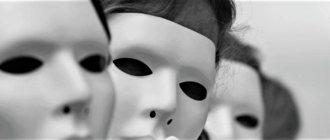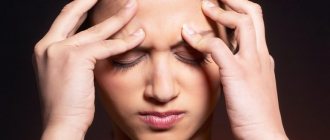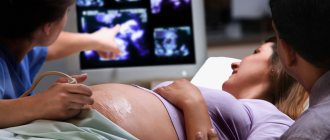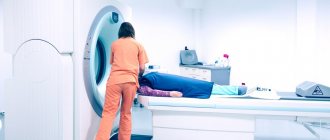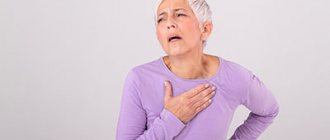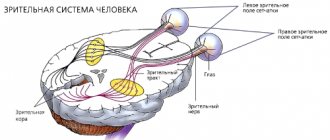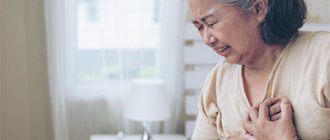This term unites a group of chronic neuromuscular diseases accompanied by primary muscle damage. Progressive muscular dystrophies are manifested by various disorders in the structure and metabolism of muscle tissue, leading to a decrease in strength and the appearance of progressive weakness in the muscles. Pathologies are characterized by a steadily progressive course.
Etiology and pathogenesis
Primary forms of diseases are caused by genetically determined disorders in the functioning of mitochondria, ion channels of myofibrils, disruptions in the synthesis of muscle proteins and enzymes that regulate metabolism in muscle tissue. The defective gene that causes progressive muscular dystrophy can be inherited dominantly, recessively, or in an X-linked form of inheritance.
Acquired forms of diseases can develop against the background of endocrine pathologies, chronic intoxications, vitamin deficiency, malabsorption, severe chronic diseases of internal organs, and tumor processes.
Classification of myopathies
Myopathies are divided into two large subgroups - primary and acquired.
Primary myopathies are caused by genetic disorders. They are characterized by a gradual progressive course. Known hereditary myopathies are juvenile Erb myopathy, Duchenne myopathy, Landouzy-Dejerine myopathy, Pompe disease (for which pathogenetic therapy is available)1.
Primary forms include distal forms (distal muscular dystrophy). This is a group of rare, progressive genetic disorders that cause wasting (atrophy) and weakness of muscles away from the center of the body - the arms and legs. These include distal myopathy Miyoshi, distal muscular dystrophy with vacuoles “in the frame” (Nonaka), Welander, Lane, tibial muscular dystrophy Udd, others2.
Primary forms are associated with one or more genetic mutations that are responsible for defects in proteins that provide muscle tone and contraction, as well as some enzymes. For example, one of the most common hereditary forms, Nemalin myopathy, is caused by mutations in 10 genes. All of them are related to the production of proteins3. Another rare disease, Pompe disease is caused by a congenital deficiency of the enzyme and the associated accumulation of glycogen in muscle tissue.
The defective gene can be inherited recessively or dominantly, and sometimes it is inherited linked to the X chromosome.
Acquired myopathies are divided into inflammatory (dermatomyositis, polymyositis), infectious, metabolic, endocrine, medicinal, and toxic. They develop against the background of concomitant diseases and pathological conditions, for example:
- Taking medications (glucocorticosteroids);
- Drinking alcohol;
- Ingestion of toxins into the body (toxic form);
- Endocrine disorders (dysfunction of the thyroid gland, etc.);
- Avitaminosis;
- Heart failure;
- Liver disorders;
- Malignant diseases, etc.
Prevention of pathology
The only way to prevent the development of primary myopathy is to perform a timely genetic examination of the parents. Examinations are also performed in the early stages of pregnancy.
Prevention of secondary forms consists of maintaining an active lifestyle, hardening procedures, giving up bad habits, and properly planning a diet. If there is a high risk of developing pathology, i.e. with a burdened hereditary history, you should take prophylactic medications prescribed by your doctor.
Causes of the disease
The disease, depending on the type, has different causes.
Inflammatory forms develop against the background of autoimmune reactions - a disruption of the immune system, due to which the body “attacks” its own tissues and organs. Some inflammatory forms are associated with systemic lupus erythematosus, rheumatoid arthritis, and polyarteritis nodosa4.
Infectious causes can be viruses, bacteria and other pathogens, for example:
- Trichinella;
- Toxoplasma;
- HIV infection;
- Coxsackie viruses;
- Influenza viruses;
- Bacteria of the genus Borrelia are the causative agents of Lyme disease;
- Staphylococcus aureus.
Drug-induced myopathies can develop while taking a number of drugs:
- Glucocorticosteroids;
- Lovastatin, other statins - drugs that lower cholesterol levels;
- Colchicine is an anti-gout drug;
- Amiodarone is a drug used for cardiac arrhythmias.
How does the disease manifest itself?
In primary forms, the first signs of the disease usually appear in childhood or adolescence. A typical symptom that may indicate the disease in a child is muscle weakness. This feature is characteristic of all forms. Weakness is usually symmetrical, meaning it occurs in symmetrical muscles. In the initial stages, weakness may be insignificant, but gradually its severity increases.
As the disease progresses, the quality of life decreases: even habitual loads become difficult and difficult for the patient to perform. Difficulties appear when walking or climbing stairs. Due to muscle dystrophy, posture may be disrupted and curvature of the spine may appear, for example, lumbar lordosis, kyphosis, scoliosis, which progress over time. In this case, the patient’s head and stomach protrude forward, the shoulders drop, and wing-shaped shoulder blades are formed3.
When the proximal muscles, located closer to the center of the body, are affected, difficulties arise with rising from a chair, getting out of the bath, climbing stairs, combing hair, or shaving. A “duck” gait is observed - the patient moves, swaying to the sides. With weakness in the hands, a person has difficulties performing highly differentiated work (writing, playing musical instruments, turning, etc.). Weakness of the feet is manifested by the formation of a hollow foot, a flopping gait. In some forms, for example, Nemalin myopathy, sometimes with Pompe disease, weakness of the respiratory muscles appears, which leads to an increased risk of pulmonary infections. In addition, the oxygen supply deteriorates, which can cause damage to the brain, heart, and other organs4.
Along with muscle weakness, tendon reflexes decrease, muscle spasms or contractions occur, and joint mobility is limited—contracture3.
Certain types of myopathies: clinical picture and features
Distal Miyoshi myopathy is the most common distal form, although the exact number of patients cannot yet be determined. It has an autosomal type of inheritance. The main clinical signs are progressive muscle weakness and atrophy of individual muscles. Most often the disease manifests itself in adolescence, occasionally after 40 years. The feet and legs are primarily affected.
Typical complaints at the beginning of the disease manifestation are difficulties when standing on your toes, weakness when walking on your toes. Soon the calf muscles begin to atrophy, sometimes greatly decreasing in volume in just a few days. Gradually, weakness appears in the muscles of the back of the thigh, buttocks, wrists, and fingers. The disease progresses slowly, and disability usually occurs several decades after the first signs appear5.
Duchenne muscular dystrophy is one of the most common inherited forms. Inherited in a recessive, X-linked manner. It develops only in boys. Symptoms appear between 2 and 5 years of age. Clinical signs - fatigue, difficulty climbing stairs, frequent falls, progressive muscle weakness, atrophy - muscle tissue is replaced by fibrosis or fatty tissue. Children develop hyperlordosis of the lumbar spine and contractures of large joints. Internal organs are affected. Patients lose the ability to move independently at 7-13 years of age6. Duchenne muscular dystrophy is characterized by a very high level of CPK (cretin phosphokinase), above 2000 U/l.
Pompe disease is a rare progressive neuromuscular disease transmitted in an autosomal recessive manner. It is associated with a deficiency of the lysosomal enzyme alpha glucosidase, as a result of which glycogen accumulates in cells, so the disease is classified as a lysosomal storage disease. The disease is characterized by progressive degeneration of skeletal, respiratory, and, mainly in infants, cardiac muscle tissue. Pompe disease can develop at any age, including adults. The main manifestations are muscle weakness, muscle atrophy. This leads to gait disturbance, difficulty walking, climbing stairs, and hyperlordosis. Respiratory symptoms are manifested by shortness of breath with minor exertion, frequent infections of the upper respiratory tract and lungs. Pompe disease is one of the few hereditary pathologies for which replacement therapy has been developed to slow the progression of the disease and improve the quality of life of patients7.
Distal Nonaka muscular dystrophy is inherited in an autosomal recessive manner. Symptoms begin in the 20s and 30s with damage to the tibialis anterior muscles. After a few years, the function of the foot is impaired, then the thigh muscles and iliopsoas muscles are affected. It becomes difficult for patients to climb stairs or get out of a chair. Soon weakness of the flexors of the neck, shoulder girdle, and hands occurs. 13 years after the onset, patients are unable to move independently8.
Medicines
Photo: smartmoney.today
The goal of treatment is to reduce muscle tissue atrophy. Anabolic hormones (retabolil, nerobol) provide significant assistance in this regard. Their action is expressed in stimulating the growth of muscle cells, which is necessary to maintain muscle mass. Due to this, there is an increase in strength, performance and endurance. However, there is a downside to taking these drugs. With long-term use, accompanying effects may occur in the form of baldness, increased hair growth on the face and body. In addition, there is such a concept as masculinization, which refers to the appearance of secondary male sexual characteristics in women. In this case, the physique changes to a male type, the voice becomes rougher, the menstrual cycle is disrupted, the elasticity of the skin changes, and acne appears.
Anticholinesterase drugs include drugs such as prozerin and neuromidin. Preference is given to neuromidin, since its spectrum of action is much wider than proserin. Also, with long-term use of proserin, various unpleasant side effects are observed, so in most cases the drug is prescribed in short courses.
In turn, neuromidin has a good stimulating effect on neuromuscular transmission and also increases muscle contractile activity. In addition, neuromidin has sedative and analgesic (relieves pain) effects.
Vitamin preparations include vitamins E, B and C, as well as nicotinic acid.
How to diagnose myopathy?
To establish a diagnosis, a clinical picture alone is not enough, but the appearance of characteristic signs of the disease should be the reason for a thorough examination of the patient.
If congenital myopathy is suspected, molecular genetic research methods are necessary. Without them, it is impossible to establish a final diagnosis.
In addition, the examination includes3:
- Biochemical blood test, which helps assess the level of enzymes, ALT, AST, CPK (creatine phosphokinase), lactate dehydrogenase, etc.;
- Electromyographic, electroneuromyographic research methods - the first help to assess the potentials that arise in skeletal muscles when the muscle fiber is excited, and the second to determine the functional state of the muscles and peripheral nerves;
- Biopsy of muscle fiber, with its help it is possible to identify atrophic, destructive processes;
- Immunobiochemical, immunohistochemical studies required if autoimmune pathology is suspected.
1.General information
If a medical nosological term ends with “-pathy”, in different cases this may mean a diagnosis that needs clarification, a collective and too general, etiologically unclear diagnosis. Myopathy (Greek lit. “muscle disease”) is a group of diseases, congenital or acquired, the general characteristics of which are disorders of neuromuscular metabolism, degenerative-dystrophic processes and, accordingly, progressive functional failure of muscles, especially skeletal ones.
Epidemiological data regarding myopathies are contradictory and, apparently, incomplete. In any case, this group is one of the rare diseases, and even the most common of them, Duchenne muscular dystrophy, occurs no more often than 14 people per 100,000 population. Mostly men suffer.
A must read! Help with treatment and hospitalization!
Treatment of myopathies
Currently, there is no pathogenetic therapy for most myopathies, but methods of gene and cell therapy are being developed, and for myopathies associated with storage diseases, therapy is being developed to replace enzyme deficiency in the body. For some diseases, treatment is already available. These include Pompe disease.
In addition to pathogenetic treatment, symptomatic therapy is carried out. It includes various classes of drugs that enhance metabolic processes, increase muscle strength, and support the normal functioning of the nervous system, brain, heart, and digestive organs3.
Non-drug treatment includes a number of therapeutic techniques aimed at improving the quality of life and socialization. These include physical therapy, physiotherapy, psychological rehabilitation, massage, and others.
The prognosis of hereditary myopathies can be different. Timely diagnosis is extremely important.
References
- Antelava O.A., Nasonov E.L. Modern approaches to the classification criteria of idiopathic inflammatory myopathies // Scientific and practical rheumatology - 2007. - T. 45 - No. 5 - P. 41–46.
- Sparks SE, Escolar DM Congenital muscular dystrophies // Handb. Clin. Neurol. Elsevier. 2011; (101):47–79.
- Kurushina O.V., et al. Modern approach to the diagnosis and treatment of primary and secondary myopathies // Bulletin of the Volgograd State Medical University - 2021. - No. 1. -P. 16–22.
- MSD Manual Professional Version. Congenital Myopathies. 2021. URL: https://www.msdmanuals.com/professional/pediatrics/inherited-muscular-disorders/congenital-myopathies (accessed: 04/04/2019).
- Fedotov V.P., Ryzhkova O.P., et al. Miyoshi myopathy: diagnosis of a familial case of dysferlinopathy // Neuromuscular diseases - 2021. -T. 6 – No. 1.
- Zhdanova E.B., Kharlamov D.A., Belousova E.D. Somatic disorders in progressive Duchenne muscular dystrophy // Russian Bulletin of Perinatology and Pediatrics – 2011. – T.56 – No. 5.
- ACMG Working Group on Management of Pompe Disease AWG on M. of P. et al. Pompe disease diagnosis and management guideline. // Genet. Med. Various. 2006;8(5):267–288.
- Skoromets A.A., Kazakov V.M., Rudenko D.I. Facioscapulohumeral muscular dystrophy and its connection with facioscapulohumeral muscular dystrophy. History, clinical picture, genetics and differential diagnosis. Litres. 2021.
GZEA.PD.18.09.0435b
Folk remedies
Photo: medaboutme.ru
Since in most cases the cause of myopathy is a hereditary pathology, it is impossible to alleviate your condition without medications, but by independently following certain measures you can improve your general condition.
For example, nutrition plays a big role, so it is important to follow some recommendations. Firstly, you should add more fresh vegetables and fruits, dairy products, eggs, honey, nuts, and cereals (especially oatmeal and buckwheat) to your diet. Secondly, it is important to give up coffee, alcohol, potatoes, cabbage, and spicy foods.
In order to prevent accelerated muscle atrophy, it is necessary to constantly perform therapeutic exercises. But you should also remember that the condition of the muscles in myopathy is far from the condition of the muscles of a healthy person. Accordingly, the load should be minimal so as not to cause overvoltage. Swimming pool exercises are perfect for this purpose.
Also, do not forget about the importance of breathing exercises. A common occurrence in myopathy is damage to the respiratory muscles, resulting in impaired ventilation of the lungs, which subsequently leads to an inflammatory process (the development of pneumonia). Breathing exercises are aimed at improving gas exchange in the lungs.
It is not recommended to develop a list of exercises on your own; it is better to contact a specialist for an individual selection of the necessary exercises. After training at a medical institution, you can continue gymnastics at home.
The information is for reference only and is not a guide to action. Do not self-medicate. At the first symptoms of the disease, consult a doctor.
